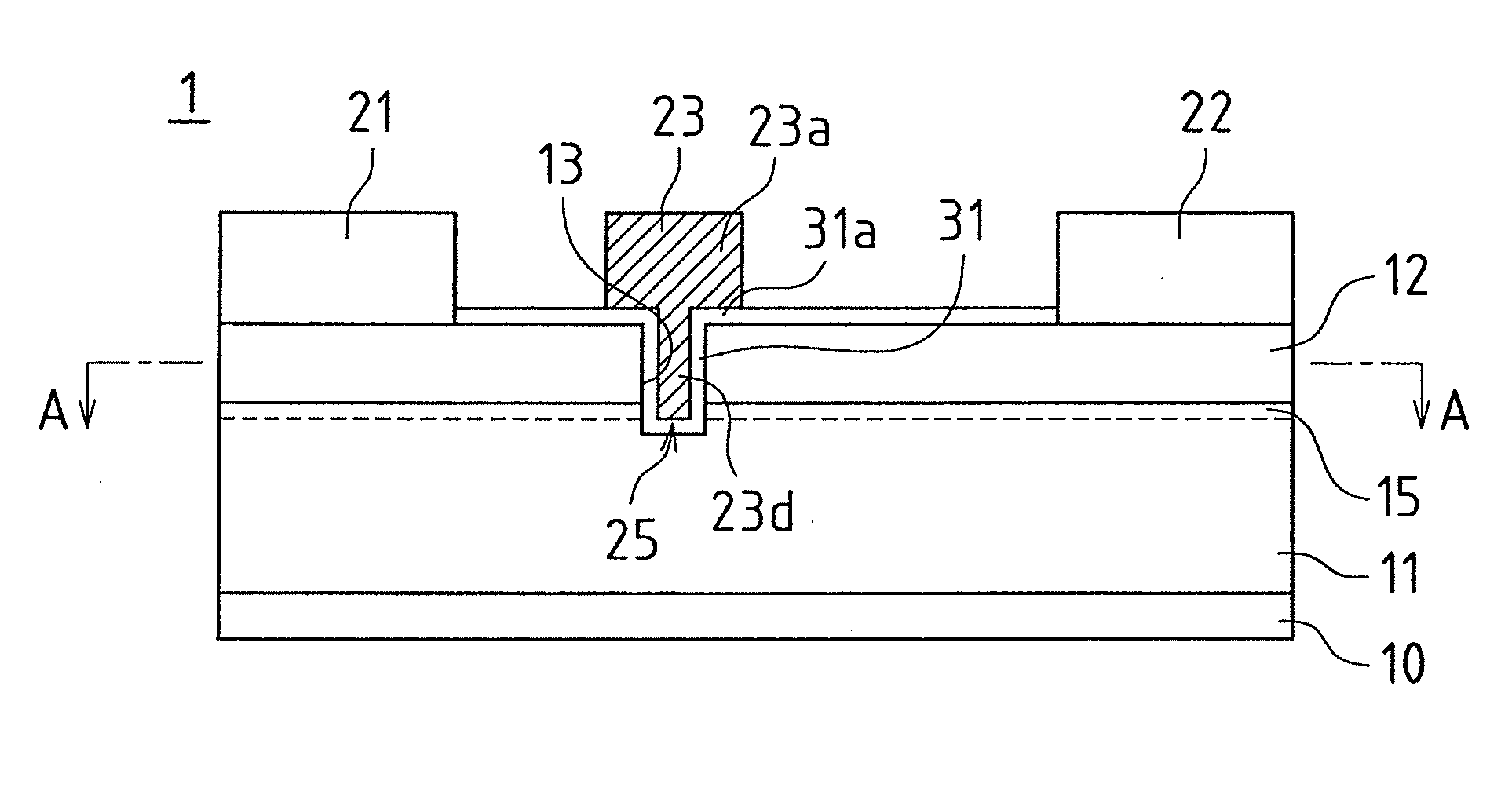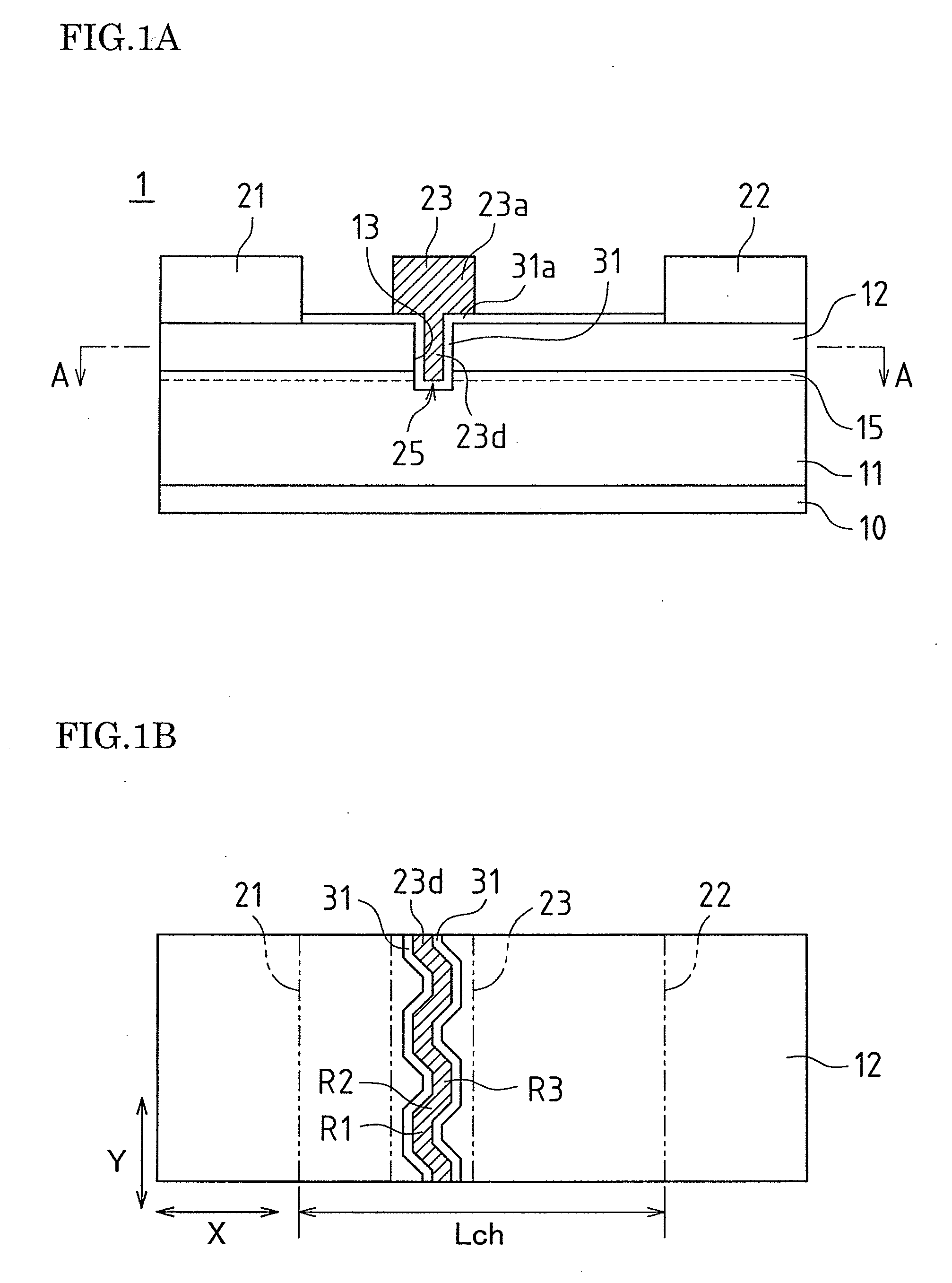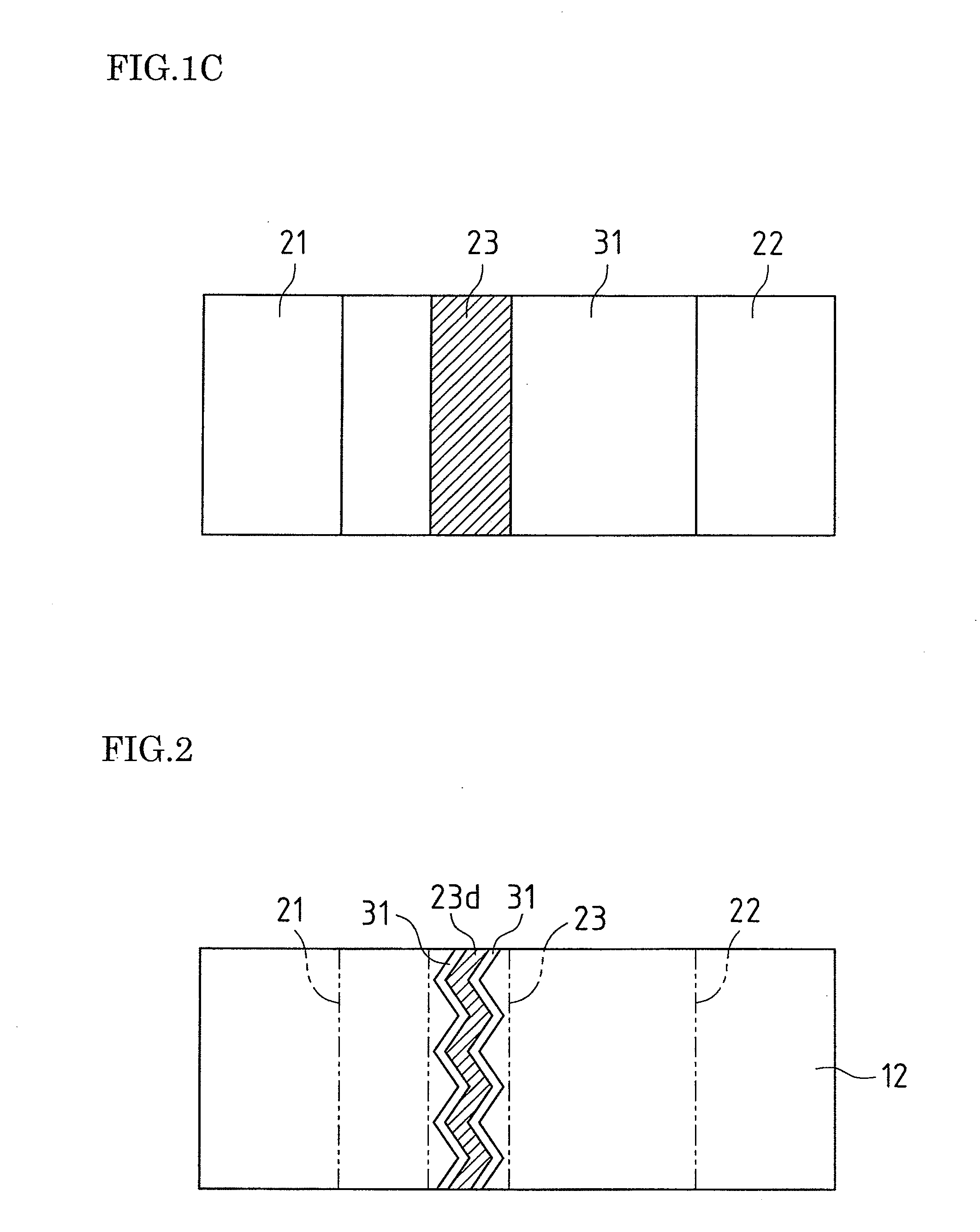Field-effect transistor
a field-effect transistor and transistor technology, applied in the field of field-effect transistors, can solve the problems of reducing on-resistance, limiting the miniaturization techniques of shortening the device gate length, and reducing the threshold voltage, so as to achieve favorable heat dissipation and high heat conductivity
- Summary
- Abstract
- Description
- Claims
- Application Information
AI Technical Summary
Benefits of technology
Problems solved by technology
Method used
Image
Examples
embodiment 1
[0067]A field-effect transistor according to Embodiment 1 of the present invention will be described based on FIGS. 1A to 1C.
[0068]FIG. 1A is a cross-sectional view of the field-effect transistor according to Embodiment 1 of the present invention. FIG. 1B is a structural plan view showing a cross-section at A-A in FIG. 1A. FIG. 1C is a plan view of the field-effect transistor shown in FIG. 1A. Note that while hatching indicating electrodes has been omitted for ease of viewing, the principal part (first gate electrode 23) has been hatched.
[0069]A field-effect transistor 1 according to the present embodiment is provided with a channel layer 11 formed on a substrate 10, a carrier supply layer 12 formed on the channel layer 11 and forming a heterojunction with the channel layer 11, a recessed portion 13 recessed from a surface of the carrier supply layer 12, a first insulating layer 31 formed along the carrier supply layer 12 and the recessed portion 13 in the range of a channel length ...
embodiment 2
[0119]A field-effect transistor according to Embodiment 2 of the present invention will be described based on FIGS. 9A to 9C. Note that the same reference numerals are given to constituent elements having a similar function to Embodiment 1, and description thereof will be omitted.
[0120]FIG. 9A is a cross-sectional view of a field-effect transistor according to Embodiment 2 of the present invention. FIG. 9B is a structural plan view of the field-effect transistor, showing a cross-section at B-B in FIG. 9A. FIG. 9C is a plan view of the field-effect transistor shown in FIG. 9A. Note that that while hatching has been omitted for ease of viewing, the principal parts (first gate electrode 23, second gate electrode 24) have been hatched.
[0121]A field-effect transistor 2 according to present embodiment is provided with a channel layer 11 formed on a substrate 10, a carrier supply layer 12 formed on the channel layer 11 and forming a heterojunction with the channel layer 11, a recessed port...
PUM
 Login to View More
Login to View More Abstract
Description
Claims
Application Information
 Login to View More
Login to View More - R&D
- Intellectual Property
- Life Sciences
- Materials
- Tech Scout
- Unparalleled Data Quality
- Higher Quality Content
- 60% Fewer Hallucinations
Browse by: Latest US Patents, China's latest patents, Technical Efficacy Thesaurus, Application Domain, Technology Topic, Popular Technical Reports.
© 2025 PatSnap. All rights reserved.Legal|Privacy policy|Modern Slavery Act Transparency Statement|Sitemap|About US| Contact US: help@patsnap.com



